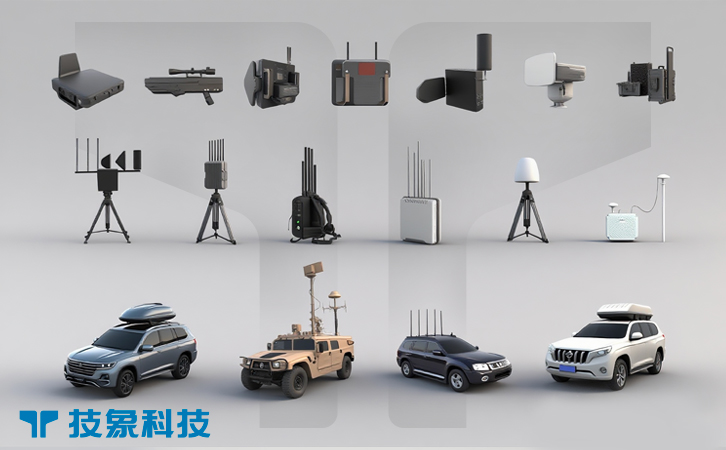Microwave Defense: High-Power Directed Energy Systems for Counter-Drone Operations
The global drone surge, with over 6 million unmanned aerial vehicles (UAVs) in use by 2025, has intensified threats to airspaces, from airport disruptions to military reconnaissance. High-power microwave (HPM) systems, a class of directed energy weapons, have emerged as a formidable counter-drone technology, emitting intense electromagnetic pulses to disable multiple UAVs simultaneously across wide areas. Unlike lasers, which target single drones with precision, HPM systems disrupt electronics in a broad cone, offering a scalable solution against drone swarms. Their non-kinetic nature minimizes physical debris, making them suitable for urban settings, border security, and battlefield defense. This article explores the rising drone threat, the mechanics of HPM systems, their real-world applications, and the challenges and future potential of this cutting-edge counter-UAV technology.
I. The Rising Drone Threat and Need for Microwave Defense
Rogue drones have escalated into a global security challenge, with over 2,500 incidents reported in 2024, including disruptions at major events and critical infrastructure, costing millions in losses. In military contexts, such as Ukraine, drone swarms—some costing less than $10,000—overwhelm traditional defenses like missiles, which can cost $2 million per shot. Civilian risks include smuggling into prisons or surveillance over restricted sites, with autonomous UAVs evading detection by minimizing RF emissions.
Conventional countermeasures like jamming risk collateral interference, violating FCC regulations, while kinetic nets are limited by range and debris hazards. High-power microwave systems address these gaps by disabling drones through electromagnetic disruption, effective against swarms and autonomous units. Their ability to neutralize multiple targets without physical projectiles is ideal for dynamic environments like cities or convoys, as seen in 2025 U.S. military tests. The DEFENSE Act, passed in September 2025, highlights HPM’s strategic value by expanding counter-UAS capabilities for civilian sites, emphasizing their role in countering the speed and volume of modern drone threats.
II. Mechanics of High-Power Microwave Systems
High-power microwave systems generate intense electromagnetic pulses in the microwave frequency range (300 MHz to 300 GHz), targeting drone electronics to overload circuits, disable processors, or disrupt navigation. Unlike lasers, which focus thermal energy on a single point, HPM systems emit a conical beam, affecting all electronics within a radius of up to 1 km, depending on power output (typically 10 kW to 1 MW). Systems like the U.S. Air Force’s THOR (Tactical High-power Operational Responder) or Epirus’ Leonidas deploy HPM pulses lasting microseconds, frying drone motherboards or sensors, causing immediate crashes or malfunctions.
The process begins with detection—via radar or RF sensors—to locate targets, followed by pulse emission from a phased-array antenna, which can sweep multiple drones in seconds. AI enhances targeting by adjusting pulse frequency to match drone vulnerabilities. Advantages include area-wide effects, effectiveness against RF-silent drones, and no physical ammunition, reducing logistics. Limitations include high power demands, requiring large generators, and potential interference with nearby electronics, necessitating precise calibration. In 2025, advancements in compact HPM sources and directional antennas have improved portability, making these systems a critical component of layered C-UAS frameworks.
III. Applications and Real-World Deployments
High-power microwave systems are deployed in civilian and military settings, offering robust defense against drone swarms. In civilian applications, airports like Singapore Changi use HPM systems to protect runways, disabling multiple unauthorized UAVs in tests without affecting aviation systems. During the 2025 FIFA World Cup qualifiers, Leonidas systems neutralized drone clusters attempting surveillance, ensuring event safety. Critical infrastructure, such as U.S. power plants, employs HPM to counter sabotage threats, with deployments reducing intrusion attempts by 30% since 2024.
In military contexts, HPM systems excel in swarm defense. The U.S. Army’s 2025 Pacific exercises tested THOR, disabling dozens of simulated enemy drones in seconds, protecting forward bases. European forces have integrated HPM into naval platforms, countering maritime UAV threats, as shown in 2025 NATO drills. The Counter UAS Technology USA Conference in December 2025 showcased these applications, highlighting mobile HPM units for convoy protection. Success relies on integration with detection networks and operator training, but HPM’s ability to neutralize multiple targets makes it a game-changer for high-threat scenarios.
IV. Challenges and Future Prospects
HPM systems face technical, regulatory, and ethical challenges. High energy demands—often megawatts—require bulky power sources, limiting mobility for dismounted operations. Collateral interference risks affecting civilian electronics, necessitating FCC-compliant shielding. Costs, starting at $1 million for advanced systems, restrict adoption, though modular designs are emerging. Autonomous drones with hardened electronics demand higher power outputs, increasing complexity.
Regulatory hurdles include FCC restrictions on electromagnetic emissions, though the September 2025 DEFENSE Act eases federal use at critical sites. Ethical concerns involve potential health risks from stray pulses and privacy issues from integrated surveillance, requiring strict oversight under ITU guidelines. Future prospects are strong, with 2025 innovations in compact HPM arrays and AI-driven pulse optimization enhancing efficiency. By 2030, the counter-UAS market is expected to grow, with HPM leading against swarms. Policy support and ethical frameworks will ensure responsible deployment, positioning microwave defense as a cornerstone of aerial security.
Conclusion
High-power microwave systems offer a revolutionary counter-drone solution, disabling swarms with electromagnetic pulses in 2025’s threat-filled skies. Their area-wide effects and non-kinetic approach make them ideal for airports, events, and military operations, complementing other C-UAS tools. Despite challenges like power demands and regulations, real-world successes and emerging innovations underscore their potential. As drone threats evolve, HPM systems—integrated into layered defenses and supported by policy reforms—will remain vital. By addressing technical and ethical hurdles, stakeholders can harness this technology to secure airspaces, ensuring safety in a drone-dominated era.



